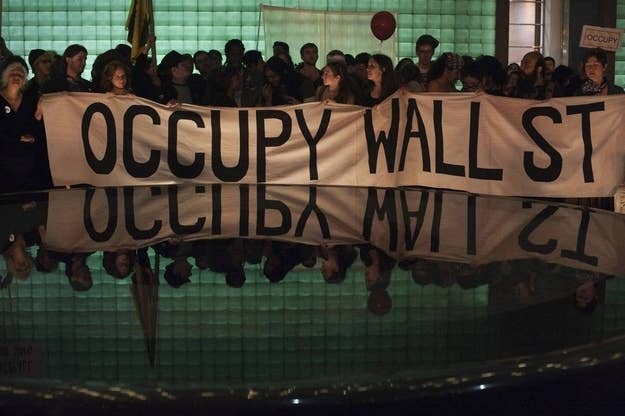
Occupy Wall Street announced Tuesday that it had survived a winter that some predicted would be fatal, staging a series of protests and a thousands-strong, blocks-long march from Manhattan's Union Square south to Battery Park.
But if the movement proved that it has staying power, it also failed to answer some of the basic questions about its future: Was the day a success? What does "success" even mean to the dispersed Occupy movement?
Occupy's clearest victories have been its inroads into the culture, the talk of inequality and the new ubiquity of the notion of a "99%" majority. But unlike the World Trade organization protests in Seattle in 1999, the Occupy protests haven't effectively prompted a national discussion of their platform, partly because they don't have one and partly because they are stuck in between two worlds: Seattle-style protests featuring aggressive direct action tactics, and more traditional political organizing. The occupiers seem unwilling, or unable, to pick a direction and stick with it.
May Day had an exhaustive menu of events, including everything from unpermitted direct actions with black-clad anarchists attacking press to a large-scale traditional march with a coalition of labor groups.
Before the midday "Wildcat March," an unpermitted action leaving from a park in Lower Manhattan, a couple hundred activists assembled to prepare.
"This is going to be a shitshow," said one occupier who had texted BuzzFeed to tout the march as "the only interesting thing happening before 4."
The marchers included a "black bloc," a group of protesters dressed in black, wearing bandannas and face masks. Black blocs are an anarchist protest tactic dating back to the '80s, intended to display solidarity and also hide protesters' identities during acts of vandalism and violence.
This black bloc almost did its job, attacking photographers trying to cover them and fighting back against police as the cops tried to stay the march from leaving. But they were quickly cowed, as the marchers dribbled through downtown in separate groups, deciding on the fly to meet in Washington Square Park ("We need to go to a park!" one protester told the crowd, using the "people's mic"). The black bloc dispersed, and the march wasn't a "shitshow" in the way the occupier intended.
"We got more people out here than Kellogg's got cornflakes!" said one protester cheerfully.
That wasn't true then, but it arguably was later, when Occupy joined up with a number of labor groups, immigrant rights groups, and others who make up the grab-bag of liberal causes that Occupy has increasingly found itself a part of. The march they formed together took up several blocks, and numbered well into the thousands of people.
The unions occupied the front half of the march and turned the finale at Battery Park into essentially a labor rally, but Occupy's segment — including some of the black bloc from earlier — took up a lot of space, and the march was seen as a hopeful sign for the movement.
Organizer Max Berger called it "the biggest OWS march ever."
The march represented a less radical way forward for the protesters: accepting a role as a progressive political organization with ties to other ones and participating through the system as opposed to outside it. The protesters fear co-option by established groups, but the New York occupiers haven't gone fully in the other direction that their occasional anarchist tactics gesture towards, and that other occupations in cities like Oakland have embraced.
May Day ended in typical Occupy style, with a short-lived re-occupation of a park between J.P Morgan Chase and Standard and Poor in Manhattan's Financial District, followed by an hour or so of disorder as occupiers faced off with police in the streets. There were more than 50 arrests yesterday overall.
After 16 hours of more energy than the movement has shown since the fall, even the most diehard activists start to run down. The night ended with an impromptu meeting in Zuccotti Park, where it all began, while protesters started to peel off and go home to bed. Livestreamer Tim Pool could be seen, head resting on hands, sitting on the stone steps, speaking to his livestream audience.
"For those of you tuning in, I'm just...zoning out," Pool said.
